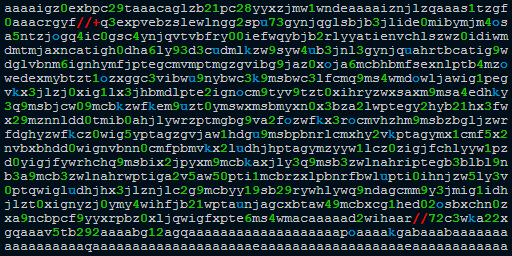
- Python convert to base64 encoding how to#
- Python convert to base64 encoding code#
- Python convert to base64 encoding windows#
Perform URL-safe encoding: Using standard Base64 in URLs requires encoding of "+", "/" and "=" characters into their percent-encoded form, which makes the string unnecessarily longer.The applied character limit is defined in the MIME (RFC 2045) specification, which states that the encoded lines must be no more than 76 characters long.

Python convert to base64 encoding windows#
Newline separator: Unix and Windows systems use different line break characters, so prior to encoding either variant will be replaced within your data by the selected option.As for files, the binary option is the default, which will omit any conversion this option is required for everything except plain text documents. Note that in case of text data, the encoding scheme does not contain the character set, so you may have to specify the appropriate set during the decoding process. Change this option if you want to convert the data to another character set before encoding. Character set: Our website uses the UTF-8 character set, so your input data is transmitted in that format.Base64 is used commonly in a number of applications including email via MIME, as well as storing complex data in XML or JSON. This encoding helps to ensure that the data remains intact without modification during transport. Base64 encode your data without hassles or decode it into a human-readable format.īase64 encoding schemes are commonly used when there is a need to encode binary data, especially when that data needs to be stored and transferred over media that are designed to deal with text. To learn more about the base64 library, refer to the official documentation here.Meet Base64 Decode and Encode, a simple online tool that does exactly what it says: decodes from Base64 encoding as well as encodes into it quickly and easily. Lastly, all the information is printed on the terminal. The b prefix in front of strings converts them into bytes. Next, it encodes all the three strings to base64 and further decodes base64 strings to bytes.
Python convert to base64 encoding code#
The Python code snippet above initializes three strings: a usual string, a URL, and a Microsoft Windows file path. S3 Encoded to base64: b'QzpcUHJvZ3JhbSBGaWxlc1xVc2Vy' S2 Encoded to base64: b'aHR0cHM6Ly93d3cuaW5zdGFncmFtLmNvbQ=' Now that we are through with some theory let us look at relevant examples.

If set to True, it will raise a binascii.Error exception.


By default, the method will ignore all the characters that do not fit inside the regular base-64 alphabet or the alternative alphabet string. This method also has a parameter, validate, a flag for performing validation over the offered string. This library has yet another method, b64decode(s, altchars = None, validate = False), that accepts a base64 encoded stream of data s, an optional ASCII or bytes-like string representing alternative characters for + and / characters altchars. It is needed to ensure that the conversion of URLs and file paths to base64 is safe and sound. Yet another parameter, altchars, specifies an alternative alphabet for characters + and /. This module has a b64encode(s, altchars = None) method that accepts a bytes stream of data s and converts it to a base64 encoded string. This module is a part of the Python standard library. To perform encoding to base64, we will use a Python-based module, base64.
Python convert to base64 encoding how to#
In this article, we will learn how to encode a string as base64 with the help of the Python programming language. This conversion is generally used for transferring data without any modification.Īll the programming languages contain utilities to convert data from one format to another. The Base64 is an encoding scheme that converts a sequence of 8-bit bytes binary data to an ASCII or American Standard Code for Information Interchange string format by translating the binary data.


 0 kommentar(er)
0 kommentar(er)
